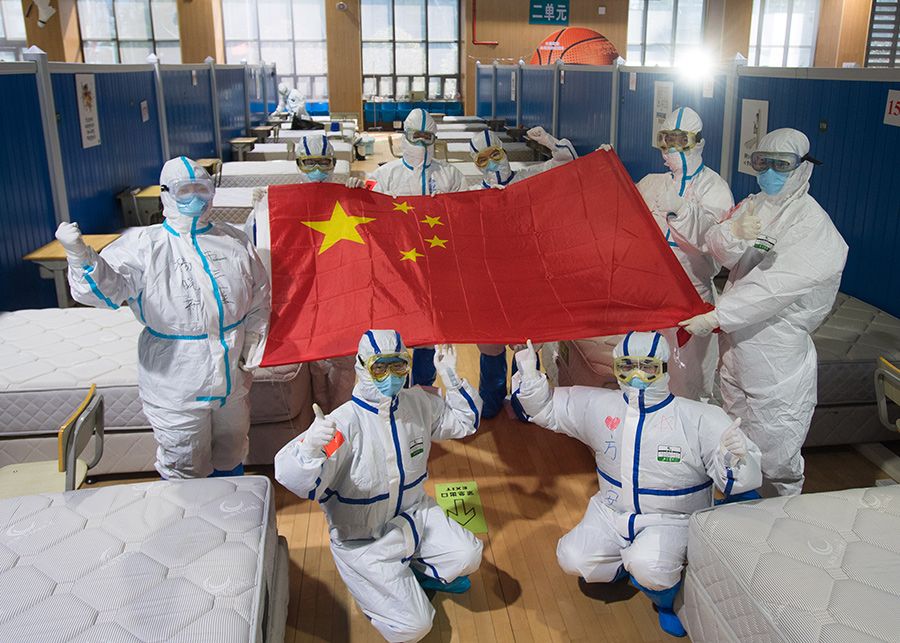By Dr Chen YuSun
A top ID doctor from Shanghai who leads his team in the combat against COVID-19 gave a lecture online today.
The following is the note taken by one of the audience (I don’t think what he means is “isolation gown” but should be that “overall protection suit”. I guess this might be an error)
I’m in a Zoom session with Dr. WenHong Zhang, the chair of the Society of Infectious Diseases of China Medical Association. There about 7000 attendees, mostly United States listeners, including Stanford Health Care, Santa Clara County hospitals, and New York City hospitals. Here are some notes.
-The predicted number of cases in Shanghai with exponential growth was calculated to be nearly one million by March 1, but social distancing avoided this.
-Cases went down to zero or near zero by late-Feb, and there is now a small second wave from imported cases.
-The key to mitigating spread in Shanghai was doing diagnostic COVID tests on every suspected case.
-All patients with positive COVID PCR were admitted to a designated COVID hospital regardless of their level of illness.
-Coinfection was very common with other respiratory bacteria and common cold viruses, and >50% of patients were positive for a co-infection with a respiratory organism.
–The false-negative rate of COVID PCR even with two serial swabs was 10-30%! Next-Generation Sequencing for COVID was used as the gold standard.
-RSV, Mycoplasma and Parainfluenza virus also caused similar bilateral CT findings to COVID. Molecular diagnostics was needed, and even two negative PCRs, for suspected cases on CT – they sent Next-Gen Sequencing, a PCR to National Lab, a 3rd local PCR, and local PCR in another swab location (e.g. anal) (e.g. sent all 4) before they would r/o COVID.
-Mean incubation was 6.4 days, and patients were quarantined mean 5.5 days from symptom onset, with this approach the “curve” was 1 month in duration.
–Hydroxychloroquine is in a multicentre RCT in China and will be published “very soon”.
–LDH and D-Dimer were associated with the development of ARDS.
-He felt there is a narrow window between positive CT findings and deterioration to ARDS, where corticosteroids have been helpful and further studies are required to investigate this.
-Approximately 5% of patients will need ICU level care, and mortality depends on the availability of ICU.
-How to protect medical personnel – China protocol:
1) Standardized process in terms of patient care areas and flow.
2) PPE – double-layer gloves, double-layer shoe covers, isolation gown, masks, goggles, etc. “The most important is to cover the head”
3) Positive pressure masks – for aerosol-generating procedures.
Q&A:
-Time window until infection and test positive? 3d by PCR, and 7d by Serological.
-Who did you test? They abandoned risk factor criteria quickly and just tested anyone with symptoms.
-What is the best test? PCR is better than the Antibody test for sensitivity. But the Antibody test is helpful, as PCR can have false-negative by week 3. The antibody test is helpful to see the overall population prevalence in terms of patients with mild or no symptoms.
-Does viral RNA degradation of samples happen? Tests are done within 4 hours in China, or frozen at -20C otherwise there is increased false negative.
-What is the risk for pregnant women? These cases were mild, and no severe/intubated cases were seen so far in Shanghai (no Wuhan data presented).
-What are the underlying medical conditions that are high risk? Heart disease does the worst – the virus causes myocarditis as well.
-What percentage of patients have antibodies? Every recovered patient tested has found to have antibodies on testing but it is unclear if these are actually protective.
-What is the dosage for hydroxychloroquine? 400mg bid x1d, 400mg po qd. They did not treat with azithromycin due to hepatotoxicity observed.
-What is the risk to health care workers? There were none of his colleagues who went to Wuhan to help that became infected with COVID, and this is attributed to PPE.
-What is the outcome of COVID survivors? Lung fibrosis is definitely less than SARS and most patients had a good long-term outcome.

